#nimby
Note
I'm a big fan of building commie blocks to ameliorate the US housing crisis -- and putting them in the public parks that were stolen from other communities to give colonisers some trees to look at -- but what policies should be enacted to get suburbanites into beautiful and efficient bedspace apartments with kitchens and washrooms shared by a floor?
As a good social democrat, I'm contractually obligated to prefer Red Vienna to your proper commie block. Short of a complete class revolution that completely upends the social hierarchy, a significant part of ensuring that social housing pulls off being "a living tapestry of a mixed community" is building it to middle-class standards (including aesthetic standards) so that people with the money to find alternatives don't all leave. Art Deco is a hell of a lot chic-er than the boring minimalist crap that luxury developers are getting away with these days.
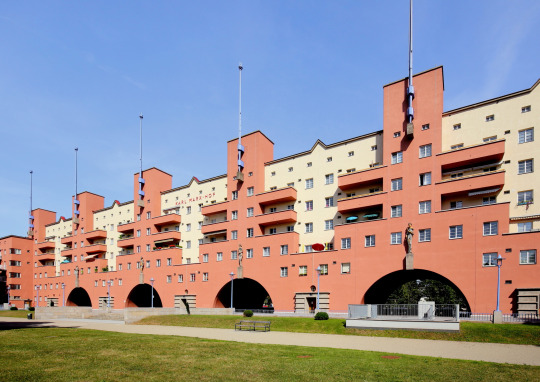
Also, don't build them in parks: green space is not only important for environmental sustainability but also the health and mental health of working-class and poor communities who can't afford houses in the suburbs, and we should be encouraging in-fill development instead. (Build them on golf courses instead, because they are classist, invasive, artificial monocultures that do nothing for the environment.)
In terms of how to make suburbia more in synch with dense, sustainable social housing, there are a number of necessary changes:

Commuter rail: suburbs predate the car by a fair few decades, and originally sprung up along the routes of commuter rail lines. Well, it turns out that transit-oriented development and dense transit corridors go hand-in-hand: if you can build higher-density units near transit lines, people will use mass transit to commute, and if there are well-planned areas of higher density around major urban areas, the increased number of commuters can support more regular transit services.

Planning/zoning/ligitation revolution: as I mentioned in my student housing post, one of the major reasons why it's so hard to build affordable housing projects is that local NIMBY groups use every legal tool in the book to bury them. So there needs to be pretty comprehensive reforms of zoning regulations (banning single-family zoning, reducing set-backs and eliminating mandatory parking, getting rid of "unrelated persons" limitations, getting rid of building heights limits, etc.), standardization of the permitting and development approval process, streamlining of the public comment/hearing process and environmental review process for model projects, and extreme limits on litigation for model projects.
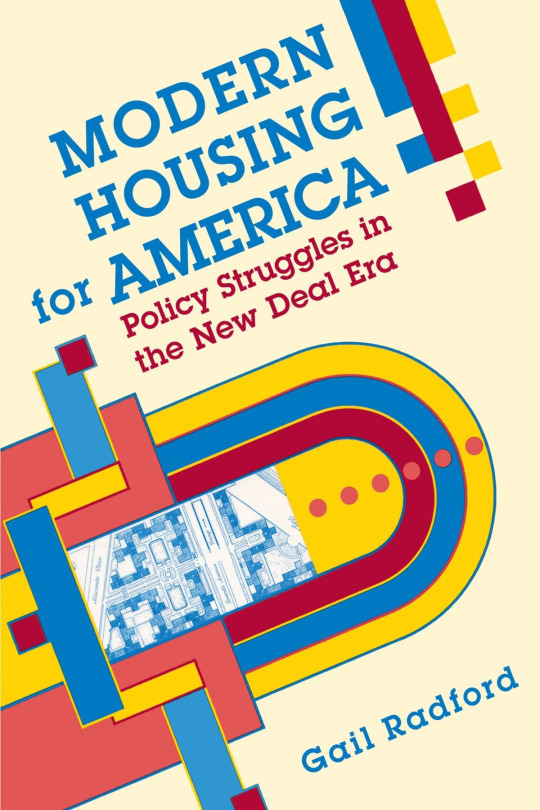
Financing reform: as I sort of imply in my Red Vienna section above, a big part of making social housing/public housing successful and avoiding replicating or increasing class and racial segregation is adhering to middle-class minimum standards. This has important knock-on implications:
you need to eliminate requirements for absolute lowest possible land costs (which restrict social housing to economically and socially isolated areas).
you need to raise allowable construction costs, so that you can achieve those aesthetic standards and avoid corner-cutting like smaller rooms and lower ceilings, single-thickness walls/floors/ceilings, no doors on cabinets or closets, cheap cladding and wiring and pipes and other building materials, low-quality insulation and HVAC, etc. Not only do middle-class folks notice this stuff and go elsewhere, but it's all penny-wise and pound-foolish, because cheap construction runs down faster which increases maintenance costs, and sometimes it just straight-up kills people.
you need to adequately finance maintenance, services, and amenities. This is crucial to keeping tenants with deeper pockets, but it's also another one of those things where penny-pinching is counter-productive in the long-run. The more you save on maintenance costs, the faster the buildings run down and the more expensive repairs you have to make. The more you save on services like superintendants and doormen, the more your tenants end up having to spend on handymen and the more you have to spend on police and repair costs. And so forth.
And there is a real potential here for all kinds of positive feedback loops: spending money on achieving higher standards of construction and operation means that you can hang onto and attract higher-income tenants, which means you can have sliding scale rents that cross-subsidize tenants and pay for higher construction and operating costs, and the poor and working class tenants who couldn't have paid for those higher costs and amenities on their own enjoy a "positive externality" for once.
#public policy#public housing#social housing#social democracy#urban development#urbanism#urban planning#urban studies#housing#nimbyism#nimby#red vienna#commie blocks
104 notes
·
View notes
Text
There are cruel and unjust things in this world but I will not allow them in my home.
By Home I mean everything btw, I mean my house I mean my workplace, my community, my neighborhood. If I see an act of cruelty anywhere near me, Im going to end it right where it was done.
153 notes
·
View notes
Text
The Stench is REAL: Rotten Eggs + Reeking Weed Factory+ Bad Pipes = "It smells. Bad. VERY bad. VERY VERY bad."

The irony of bridezlla Rachel MEgain Markle kicking up a fuss over a one (1) hour "spectacle" inside the Queen’s "musty" chapel, only to acquire a 1st homebuyer loan for an odorous property.
"It smells like offal that has been rotting in the sun. It makes my stomach churn," a local from the Montecito area reportedly told The Mirror. "I’ve seen lots of homeowners closing their windows when it wafts over."
"According to the New York Post, the smell is wafting over from a nearby bird refuge (which is situated on a 42-acre stretch of saltwater marsh). Specifically, the refuge is the Andrée Clark Bird Refuge, which happens to be one of the largest wildlife refuges in the U.S. Cameron Benson, the City of Santa Barbara's clean water manager, told the Mirror that stagnant water can contribute to the smell, and that the “odor issues are sporadic and sometimes they are worse in some conditions."
"Last year, it was reported the Duke and Duchess of Sussex live just minutes from a legal weed factory base in Santa Barbara, California.
The couple's mansion is just up the road from the 20 large greenhouses full of the plants - leaving the luxury suburb reeking.
Neighbours made a string of complaints, sparking the company to install new “odour control systems”.
The Meghans, Dorito & Markus can get high just by standing outdoors as "...one resident complained that the stench was so bad that they had to pull over while driving along the road."
Imagine taking out a $14.65 million dollar loan on your VERY first home: a 9 bedroom, 16 bathroom mansion and you are CanNOT use your property for business purposes. No Spotify podcasts, NO staged Megflix/Netflix zoom calls, NO staged juggling acts outside the windows, NO book interviews, NO staged instant messages from Beyonce, NO Easter egg hunts, NO cooking shows, NO Variety photo shoots---- only 1 chicken coop interview with NOprah.

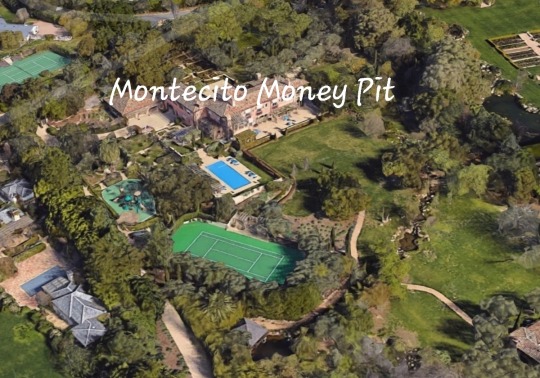
The 14,500sq ft, or 1,350sq m, main house sits on 7.4ac of grounds that include a pool, tennis court, tea house and children's cottage.
Money Pit : "The pair have paid a lot less for the property than a previous owner: in May 2009 it sold for more than $25 million. It was put on the market in 2015 for $34.5 million but failed to sell. It was relisted at the start of this year for $16.975 million, selling to the Sussexes for $2.325 million less than the asking price at $14.65 million."
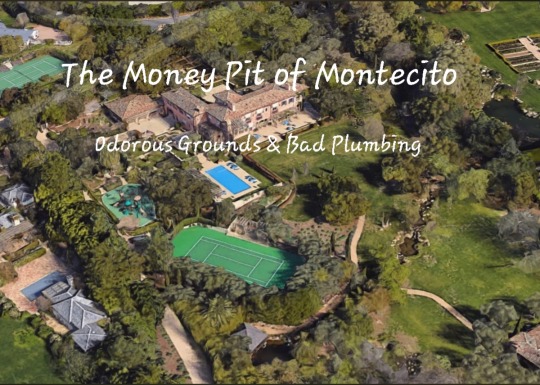
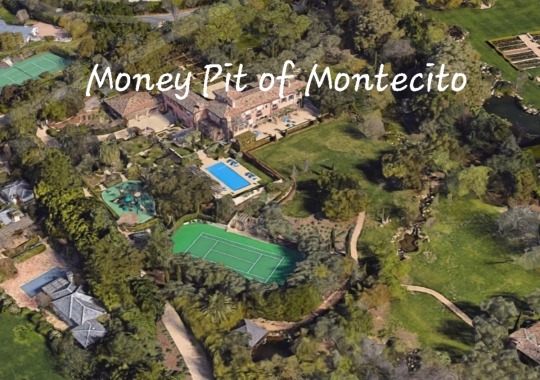

From asks @the-cat-with-the-emerald-tiara-1 Royal Organic Weed "Harry's Choice"

Poll Error: The 4th answer "Money Pit of Montecito"

#The Stench#Environmentally Conscious#save the planet#NIMBY#megxit#Montecito Weed Factory#Montecito Rotten Eggs#Plumbling Issues#Bad Pipes#the invisibles#odor control systems#jam scam#scam jam#money pit#Royal Organic Weed#my polls
14 notes
·
View notes
Text
Poverty is a policy choice
The Atlantic has an unflinching look at how the US is such a bad actor when it comes to poverty, especially child poverty, compared to the rest of the developed world. President Biden's Extended Child Tax Credit passed in his first year in office lifted 40% of the families living in poverty out of poverty, a stunning result achieved at a relatively small cost. The Republicans killed it.
There are tremendous knock-on benefits to lifting people out of poverty - healthcare costs go down, crime goes down, tax bases are widened, welfare rolls are reduced, productivity goes up. All these are well known. So why does America fall so short? Here are a few points from the article to consider:
Housing is typically the largest expense for a household. “Municipal zoning ordinances, enacted through referenda pushed by citizens’ groups and homeowners’ associations, and which prohibit the construction of multifamily apartment complexes in upscale neighborhoods, is a case in point. These benign-sounding rules foster segregation, effectively preventing the poor ... from moving in. Such policies are one of the few issues that Americans in red and blue states seem to agree on."
So yes, the NIMBY effect of the 'rich' forces the poor to live out of sight, unable to benefit from the schools, parks, and appreciation in property values enjoyed by the wealthy.
The financial structure favours the wealthy in a variety of ways. "When the wealthy patronize shops and restaurants that offer low prices and fast service, their satisfaction comes at the expense of cashiers and dishwashers paid poverty wages. When we open free checking accounts that require maintaining a minimum balance, we benefit from the fact that banks can collect billions of dollars in overdraft fees from poor customers who struggle to meet these requirements—and who often end up gouged by check-cashing outlets and payday lenders."
The notion that the government subsidizes the poor while taxing the rich does not take into consideration the massive tax benefits homeowners have with the mortgage interest deduction and state and local tax write-offs. Indeed, "the average household in the top 20 percent income bracket receives $35,363 in annual tax breaks and other government benefits—40 percent more than the average household in the bottom 20 percent."
"What is “maddening,” Desmond writes, is “how utterly easy it is to find enough money to defeat poverty by closing nonsensical tax loopholes,” or by doing 20 or 30 smaller things to curtail just some of the subsidies of affluence."
His bleak conclusion:
"Getting affluent people to engage in rhetorical hand-wringing over inequality is easy enough. Persuading them to yield some of their entitlements is a lot harder."
122 notes
·
View notes
Text
A couple of points of note…
…from rewatching a bunch of old 80s movies:
While the "evil developer" has been a regular Hollywood villain since the 30s and 40s, it really seemed to have peaked in the 80s.
Given various factors, I'm surprised it hasn't seen a resurgence (though this gets to that "modern villain" vs. "postmodern villain" distinction).
#80s movies#evil real estate developer#goonies#batteries not included#ernest goes to camp#blues brothers#gremlins 2#robocop#robocop 3#gentrification#nimby#housing crisis#how many of these characters were based on trump?
6 notes
·
View notes
Text
is the neighborhood “sketchy” or are you just not used to seeing what little to no public infrastructure looks like?
Is the neighborhood “ghetto” or have you never lived in a community that’s government has failed them?
Is the neighborhood the “rough part of town” or have you never lived below or on the poverty line?
Are you scared to walk alone at night because you’ve actually been harassed or attacked in this neighborhood, or is it just dark and quiet?
Does that person look “suspicious” or are they just existing in public space in a way you don’t like?
anyways. tired of white people from the “nice neighbors” or the burbs who don’t talk to their neighbors and scare their kids into thinking they’ll get murdered in the city.
#nimby#yimby#thoughts#thinking about urban planning and hostile architecture and structural racism and and and and#urban planning
8 notes
·
View notes
Text









NIMBY Mom
#nimby#nimbyism#unreality#made-up aesthetic#nonsense aesthetic#aesthetic#aesthetics#aesthetic moodboard#moodboard aesthetic
3 notes
·
View notes
Text
Affordable housing does good!
What she found, after an analysis using Zillow data between 2000 and 2020, and controlling for overall market trends, was that the only significant change was in the positive direction. Homes located within a typical block of the affordable housing developments saw property values increase, on average, by a small but still significant 0.9%...
The link between affordable housing construction and property values has been studied before, with mixed results. A look at federally subsidized rental housing in New York City, conducted by researchers from New York University’s Furman Center for Real Estate and Urban Policy, showed that property values were typically not depressed by nearby affordable projects. “In fact,” researchers wrote, they “led to increases in many cases.”
Another study, from Stanford Graduate School of Business researchers in 2017, looked at properties built with Low Income Housing Tax Credits in 129 counties, most of them in California and New England. They found that the low-income housing developments were associated with nearby home value increases of 6.5% when located in lower-income neighborhoods, and home value declines of 2.5% in higher-income neighborhoods. Less variable was the impact on crime: Low-income areas saw violent and property crime decline, and higher-income areas saw no increase.
11 notes
·
View notes
Text
My OCs as Megaman sprites! #2

Left - Nimby
Middle - Mogo
Right - Prickles
45 notes
·
View notes
Text
youtube
I'm a pessimist when it comes to voting as a way to solve Federal problems but this makes a persuasive case for the material good you can have by engaging in existing politics at the municipal level.
2 notes
·
View notes
Text





BIG BATCH OF OWED for Cici0215 on TH!
#my art#digital art#digital drawing#original character#anthro#art for others#imaginecici#character payment#Artyr#Dein#Essi#Nimby#Void#Turmoil
3 notes
·
View notes
Note
you're zoning revolution sounds like it would be killed in the dirt by nimby's and homeowners who have no incentive at all to change the way things are. would it be completely necessary to build red vienna say in california for example or are there no loopholes or some such the state can use?
One of the potential pitfalls of political analysis, especially of a kind favored by the left, is assuming that the power of interest groups (especially that of capital owneers) is monolithic and unchanging. In reality, power is usually divided (homeowners do not have the same interests as developers, for example) and variable (it depends on voter turnout, the attitudes of the electorate, changing demographics, and a host of other factors).
Hence why in the last few years, we've seen single-family zoning (to take one example) outright banned in California, Oregon, and Washington - that is a huge L for NIMBYs. It doesn't mean the NIMBYs lost on every single housing reform bill, or that YIMBYs are now the hegemon, but it does show a changing balance of power.
So rather than having to look for loopholes, I think it's worth pushing forwards on a broad front, because I think NIMBYism can be beaten in a straight-up fight.
58 notes
·
View notes
Text









was coloring a lot of traditional art doodles lately, I didn't realize how many I... hadn't posted lmao
10 notes
·
View notes
Video
Tory MP Laura Farris on Fracking...."it's not something that's going to happen in my constituency, and I understand environmental concerns" She then goes on to say "....I don't know if perhaps there are parts of, sort of the northern reaches of Scotland where there would be appropriate sites and I wouldn't discourage it if there were"
35 notes
·
View notes
Text
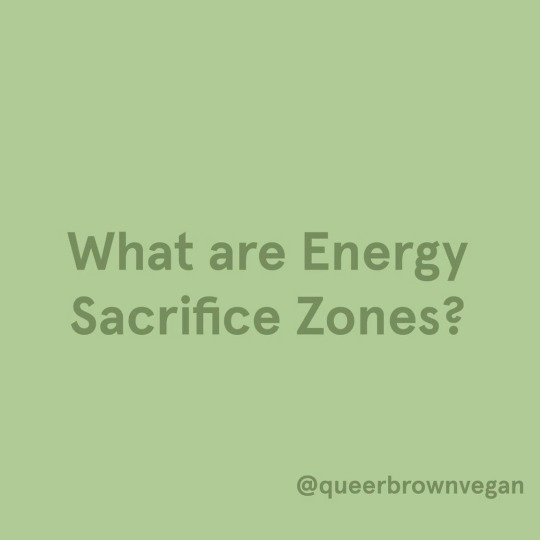




Land rights, climate action, and human rights are intertwined.
If we advocate for environmental justice policies, how do we ensure that it is just for all? I've explained my stances on sustainable development projects in previous posts and how they are detrimental to Indigenous communities globally, mainly with hydro dams.
The more I take time to listen to city-state officials regarding their support for developing the green economy, the more it becomes clear that we must ask ourselves, who will these services actually serve?
Sacrifice zones are described as geographic regions that have been heavily impacted by environmental alterations or economic disinvestment. Primarily, many communities outside of the Global North have been heavily exploited for their natural resources (think: environmental colonialism).
When we talk about energy development, we mustn't label people all NIMBY's when they are resisting energy projects. When marginalized communities, most especially Indigenous People's landscapes, are being asked to relinquish their resources or sacrifice their land for institutional infrastructure, it reinforces colonialism.
A study found that communities were concerned that they would bear the ecological impacts of energy projects while the benefits — the financial gains and new energy produced— would be accrued elsewhere. According to the IWGIA, they have noted that "Indigenous Peoples demand that their fundamental collective human rights must be respected when such large-scale projects are undertaken, as currently their lands are often seen by the state and private corporations as virgin land up for grabs to develop and exploit."
While fossil fuel extraction is an endless cycle of injustice, the idea of renewable energy is constantly in question. Are we thinking from a monetary point of view or a just ecological position? Who gets to be in these conversations regarding energy development, decide the distribution of power, and have the benefits of economic investment in their community? If it's not the community itself... then it should probably be reconsidered.
#queerbrownvegan#sustainability#climate change#activism#environmentalism#capitalism#indigenous#bipoc#resist#social justice#social activism#nimby#environment#intersectionality#intersectional environmentalism#colonialism#late stage capitalism#climate justice#climate crisis
82 notes
·
View notes
Text
This is a picture of legislators opposing NY Governor Hocul's proposal to build more multiple-family housing in the state. The NYC region is egregious in its Jim Crow-era zoning laws to keep Jews, Asians, Blacks and other minorities out. This fact makes the picture above even more tone-deaf -- it's entirely old white men. Were there no PoC or women available? It probably never occurred to them it would be seen as a problem.
And that's a problem.
12 notes
·
View notes